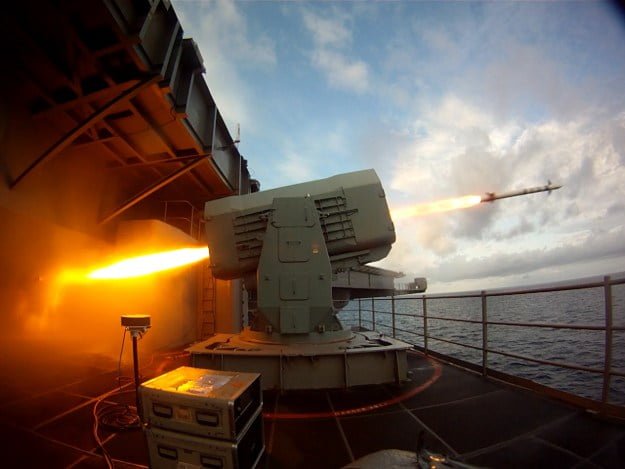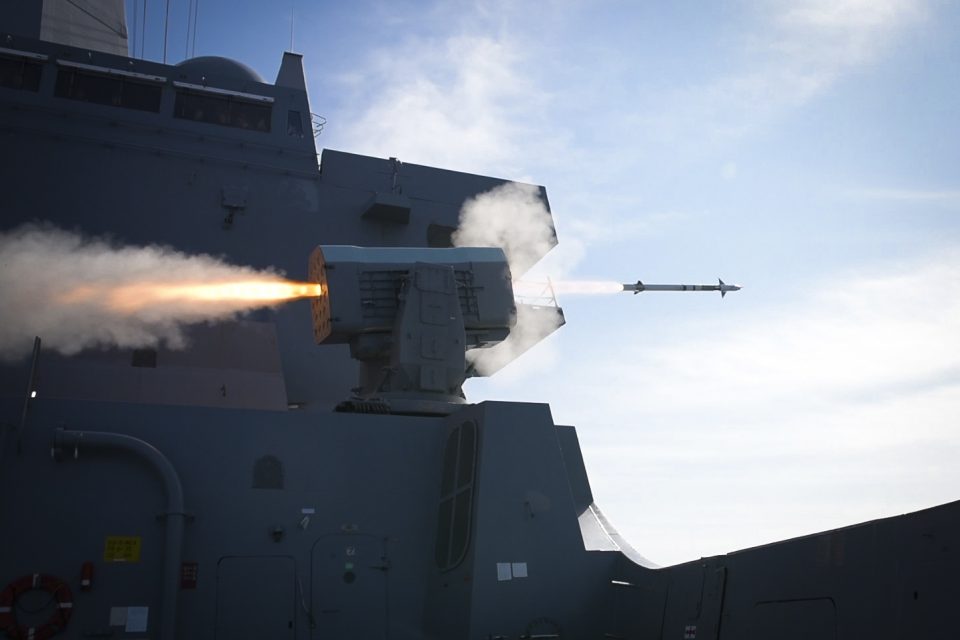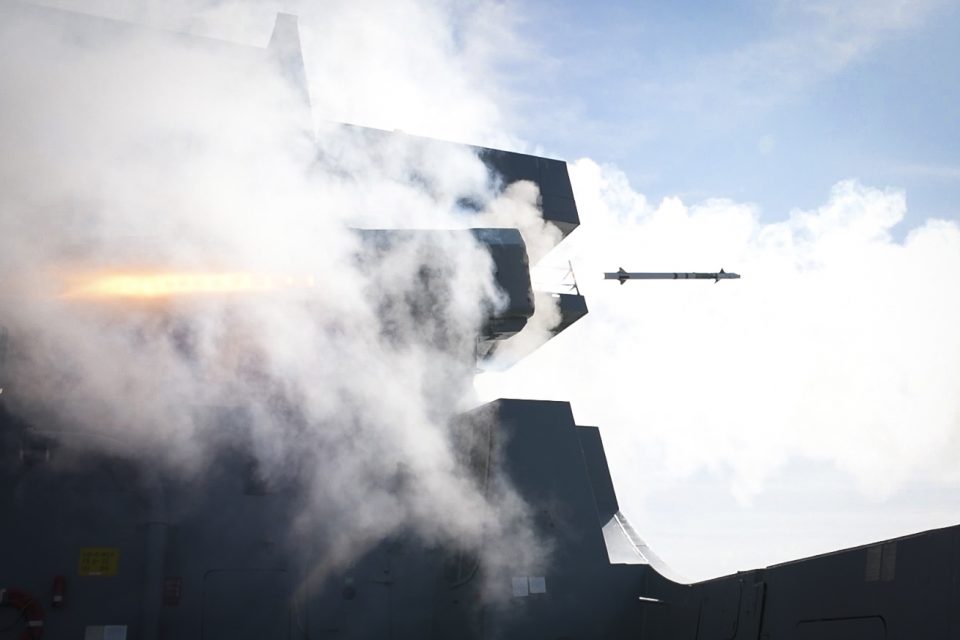2016-01-23 When the US Navy declared IOC on the Rolling Air Frame Missile Block 2 in 2014, you would barely know of its origins.
The Navy declared initial operational capability (IOC) on Raytheon’s Rolling Airframe Missile (RAM) Block 2, which brings greater accuracy and maneuverability to the self-defense system, the company announced.
Block 2 has an increased range due to a four-axis independent control actuator system and an increase in rocket motor capability, according to a June 1 statement. Its improved passive radio frequency seeker and upgrades to some components of the infrared seeker, along with advanced kinematics, help the newest block go after more complex maneuvering targets.
“RAM Block 2 provides the accuracy and lethality our sailors need to combat growing regional threats,” Capt. Craig Bowden, the Navy’s major program manager for Rolling Airframe Missile at the Program Executive Office for Integrated Warfare Systems, said in the statement. “IOC signals that the U.S. Navy is pacing the threat and ensuring the safety and security of our sailors and ships so they can operate wherever required.”
RAM Missile Firing from SldInfo.com on Vimeo.
RAM Block 2, a cooperation between the United States and Germany, was designed to protect against the newest generation of anti-ship cruise missiles. It also defends against helicopter and airborne threats and hostile surface craft, and its dual-mode guidance design allows it to engage multiple threats simultaneously.
“RAM has been protecting naval ships for three decades, and the enhanced Block 2 variant enables vital defense of our warfighters far into the future,” said Rick Nelson, vice president of Naval Area and Mission Defense for Raytheon Missile Systems. “The U.S. Navy’s declaration of IOC is an important accomplishment that shows RAM Block 2 is ideally suited to protect against the full range of threats on a variety of platforms.”
Block 2 delivered to the Navy in July 2014 and has since undergone testing. In one test event, the system went two for two against a supersonic maneuvering raid, which Raytheon says is the first time a ship-based firing system has accomplished that.
Originally, the Rolling Air Frame Missile was a General Dynamics and then Hughes NATO program based on U.S. and German collaboration.
The RIM-116 was developed by General Dynamics Pomona and Valley Systems divisions under a July 1976 agreement with Denmark and West Germany(the General Dynamics missile business was later acquired by Hughes Aircraft and is today part of Raytheon).
Denmark dropped out of the program, but theUSN joined in as the major partner.
The Mk 49 launcher was evaluated on board the destroyer USS David R. Ray in the late 1980s.
The first 30 missiles were built in FY85 and they became operational on 14 November 1992, on board USS Peleliu.
Raytheon acquired Hughes in part because Hughes was much more involved in international efforts, than was Raytheon at the time.
According to Raytheon:
RAM is an international cooperative program between the United States and Germany.
Development, production and maintenance costs are shared among Raytheon Company in the United States and the German companies LFK, DBD and RAMSYS.
Licensed production of the RAM GMRP is also underway in Korea.
The German role was highlighted in this piece from the German Liaison Office in the United States:
The Rolling Airframe Missile Program Office (RAMPO) in Arlington, Virginia, has been operated as a common US German Office for more than 30 years now.
IT is led by a U.S.Navy Captain WHO is the Program Manager together with his German deputy. he German deputy closely cooperates with the national Project Manager in Germany and acts as German authorized representative for the RAM weapon system in the USA.
RAMPO is in charge of all activities related to the development, production and procurement of the guided Rolling Airframe Missile (RAM) weapon system.
In the video above and the in the slideshow above, the amphibious transport dock ship USS New Orleans (LPD-18) fires RIM-116 Rolling Airframe Missiles (RAM) from a launcher while off the coast of the Southern California during a live fire exercise.
New Orleans, part of the Boxer Amphibious Ready Group (ARG), is currently underway conducting routine training exercises and maintenance in preparation for its upcoming deployment.
1/22/16





